8 Billion People: How Different The World Would Look If Neanderthals Had Prevailed
AncientPages.com - In evolutionary terms, the human population has rocketed in seconds. The news that it has now reached 8 billion seems inexplicable when you think about our history.
For 99% of the last million years of our existence, people rarely came across other humans. There were only around 10,000 Neanderthals living at any one time. Today, there are around 800,000 people in the same space that was occupied by one Neanderthal. What’s more, since humans live in social groups, the next nearest Neanderthal group was probably well over 100km away. Finding a mate outside your own family was a challenge.
Neanderthals were more inclined to stay in their family groups and were warier of new people. If they had outcompeted our own species (Homo sapiens), the density of population would likely be far lower. It’s hard to imagine them building cities, for example, given that they were genetically disposed to being less friendly to those beyond their immediate family.
The reasons for our dramatic population growth may lie in the early days of Homo sapiens more than 100,000 years ago. Genetic and anatomical differences between us and extinct species such as Neanderthals made us more similar to domesticated animal species. Large herds of cows, for example, can better tolerate the stress of living in a small space together than their wild ancestors who lived in small groups, spaced apart. These genetic differences changed our attitudes to people outside our own group. We became more tolerant.
Based on estimates by the History Database of the Global Environment and the UN. Max Roser, CC BY-SA
As Homo sapiens were more likely to interact with groups outside their family, they created a more diverse genetic pool which reduced health problems. Neanderthals at El Sidrón in Spain showed 17 genetic deformities in only 13 people, for example. Such mutations were virtually nonexistent in later populations of our own species.
But larger populations also increase the spread of disease. Neanderthals might have typically lived shorter lives than modern humans, but their relative isolation will have protected them from the infectious diseases that sometimes wiped out whole populations of Homo sapiens.
Putting more food on the table
Our species may also have had 10%-20% faster rates of reproduction than earlier species of human. But having more babies only increases the population if there is enough food for them to eat.
Our genetic inclination for friendliness took shape around 200,000 years ago. From this time onwards, there is archaeological evidence of the raw materials to make tools being moved around the landscape more widely.
From 100,000 years ago, we created networks along which new types of hunting weapons and jewellery such as shell beads could spread. Ideas were shared widely and there were seasonal aggregations where Homo sapiens got together for rituals and socialising. People had friends to depend on in different groups when they were short of food.
Similarities between modern humans and domesticated dogs, in contrast to archaic humans (here Neanderthal) and wild wolves. Theofanopoulou C PLoS ONE 12(10): e0185306, CC BY
And we may have also needed more emotional contact and new types of relationship outside our human social worlds. In an alternative world where Neanderthals thrived, it may be less likely that humans would have nurtured relationships with animals through domestication.
Dramatic shifts in environment
Things might also have been different had environments not generated so many sudden shortfalls, such as steep declines in plants and animals, on many occasions. If it wasn’t for these chance changes, Neanderthals may have survived.
Sharing resources and ideas between groups allowed people to live more efficiently off the land, by distributing more effective technologies and giving each other food at times of crisis. This was probably one of the main reasons why our species thrived when the climate changed while others died. Homo sapiens were better adapted to weather variable and risky conditions. This is partly because our species could depend on networks in times of crisis.
During the height of the last ice age around 20,000 years ago, temperatures across Europe were 8-10? degrees lower than today, with those in Germany being more like northern Siberia is now. Most of northern Europe was covered in ice for six-to-nine months of the year.
Social connections provided the means by which inventions could spread between groups to help us adapt. These included spear throwers to make hunting more efficient, fine needles to make fitted clothing and keep people warmer, food storage, and hunting with domesticated wolves. As a result, more people survived nature’s wheel of fortune.
Homo sapiens were generally careful not to overconsume resources like deer or fish, and were likely more aware of their lifecycles than much earlier species of human might have been. For example, people in British Columbia, Canada, only took males when they fished for salmon.
Depiction of a mammoth at Rouffignac Cave in France. Wikimedia Commons
In some cases, however, these lifecyles were hard to see. During the last ice age, animals such as mammoths, which roamed over huge territories invisible to human groups, went extinct. There are more than a hundred depictions of mammoths at Rouffignac in France dating to the time of their disappearance, which suggests people grieved this loss. But it is more likely mammoths would have survived if it wasn’t for the rise of Homo sapiens, because there would have been fewer Neanderthals to hunt them.
Too clever for our own good
Our liking for each other’s company and the way spending time together fosters our creativity was the making of our species. But it came at a price.
The more technology humankind develops, the more our use of it harms the planet. Intensive farming is draining our soils of nutrients, overfishing is wrecking the seas, and the greenhouse gases we release when we produce the products we now rely on are driving extreme weather. Overexploitation wasn’t inevitable but our species was the first to do it.
We can hope that visual evidence of the destruction in our natural world will change our attitudes in time. We have changed quickly when we needed to throughout our history. There is, after all, no planet B. But if Neanderthals had survived instead of us, we would never have needed one.
Written by Penny Spikins, Professor of the Archaeology of Human Origins, University of York
Provided by The Conversation
This article is republished from The Conversation under a Creative Commons license. Read the original article.
More From Ancient Pages
-
 Takshashila: Renowned Learning Center That Attracted Buddhist Masters, Disciples And Students Of The World
Featured Stories | Jul 23, 2016
Takshashila: Renowned Learning Center That Attracted Buddhist Masters, Disciples And Students Of The World
Featured Stories | Jul 23, 2016 -
 Khufu Boat And Unique Boat-Building Technique Of Ancient Egyptians
Artifacts | Jun 20, 2017
Khufu Boat And Unique Boat-Building Technique Of Ancient Egyptians
Artifacts | Jun 20, 2017 -
 Were The Viking Berserkers True Or Drug Addicted Warriors Fighting In Trance?
Featured Stories | Feb 3, 2015
Were The Viking Berserkers True Or Drug Addicted Warriors Fighting In Trance?
Featured Stories | Feb 3, 2015 -
 Why The Legend Of Robin Hood Is More Complex Than Previously Thought And Possibly Wrong
Featured Stories | Jul 30, 2022
Why The Legend Of Robin Hood Is More Complex Than Previously Thought And Possibly Wrong
Featured Stories | Jul 30, 2022 -
 Spectacular 2,500 Years Old Shwedagon Pagoda In Myanmar – World’s Oldest Pagoda
Featured Stories | Oct 18, 2018
Spectacular 2,500 Years Old Shwedagon Pagoda In Myanmar – World’s Oldest Pagoda
Featured Stories | Oct 18, 2018 -
 Ancient Hebrew Inscription Reveals Location Of Biblical Mount Sinai
Archaeology | Nov 21, 2019
Ancient Hebrew Inscription Reveals Location Of Biblical Mount Sinai
Archaeology | Nov 21, 2019 -
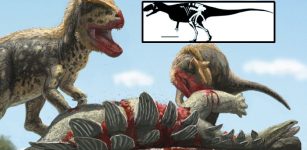 Paleontologists Find New Predatory Dinosaur With Unique ‘Eyebrow’
Paleontology | Aug 29, 2024
Paleontologists Find New Predatory Dinosaur With Unique ‘Eyebrow’
Paleontology | Aug 29, 2024 -
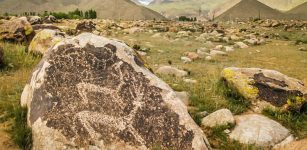 Ancient Petroglyphs Of Cholpon-Ata And Mysterious Balbals Figures That Guard Grave Sites, Kyrgyzstan
Featured Stories | Aug 24, 2015
Ancient Petroglyphs Of Cholpon-Ata And Mysterious Balbals Figures That Guard Grave Sites, Kyrgyzstan
Featured Stories | Aug 24, 2015 -
 El Cid ’The Lord’ – Medieval Castilian Leader Known For His Courage And Extraordinary Military Skills
Featured Stories | Sep 20, 2021
El Cid ’The Lord’ – Medieval Castilian Leader Known For His Courage And Extraordinary Military Skills
Featured Stories | Sep 20, 2021 -
 Great Sakya Library Is Home To 84,000 Scrolls Left Untouched For Hundreds Of Years
Featured Stories | Jul 22, 2021
Great Sakya Library Is Home To 84,000 Scrolls Left Untouched For Hundreds Of Years
Featured Stories | Jul 22, 2021 -
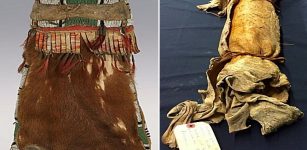 Sacred Medicine Bundle With Relics Of The First Ancestors Or Given By The Gods
Ancient Traditions And Customs | Sep 15, 2016
Sacred Medicine Bundle With Relics Of The First Ancestors Or Given By The Gods
Ancient Traditions And Customs | Sep 15, 2016 -
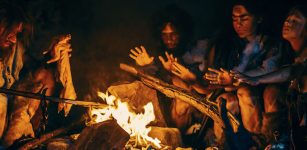 Mystery Of The Black Irish People: Who Were They?
Civilizations | May 24, 2016
Mystery Of The Black Irish People: Who Were They?
Civilizations | May 24, 2016 -
 Secrets Of Ancient Ivory Manikins Revealed
Archaeology | Nov 28, 2019
Secrets Of Ancient Ivory Manikins Revealed
Archaeology | Nov 28, 2019 -
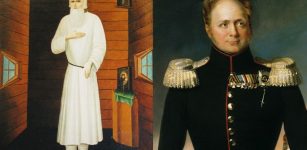 Mystery Of Feodor Kuzmich – Did Tsar Alexander I Fake His Death?
Featured Stories | Mar 23, 2020
Mystery Of Feodor Kuzmich – Did Tsar Alexander I Fake His Death?
Featured Stories | Mar 23, 2020 -
 Unexplained Phenomenon In East Anglia – Ancient Mystery Deepens As More Unusual Sightings Are Reported – Part 2
Featured Stories | Jun 1, 2018
Unexplained Phenomenon In East Anglia – Ancient Mystery Deepens As More Unusual Sightings Are Reported – Part 2
Featured Stories | Jun 1, 2018 -
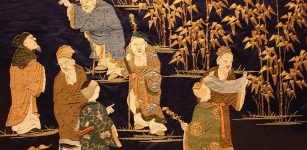 Mystery Of The Seven Sages In Ancient Myths And Legends
Featured Stories | Feb 20, 2016
Mystery Of The Seven Sages In Ancient Myths And Legends
Featured Stories | Feb 20, 2016 -
 Why Was The Medieval Town Of Wagrain Suddenly Abandoned 1,300 Years Ago?
Archaeology | Oct 7, 2024
Why Was The Medieval Town Of Wagrain Suddenly Abandoned 1,300 Years Ago?
Archaeology | Oct 7, 2024 -
 Legendary Grianán Of Aileach Built By God Dagda Of Tuatha De Danann Was Once The Royal Seat Of The Kingdom Of Ailech
Featured Stories | May 13, 2021
Legendary Grianán Of Aileach Built By God Dagda Of Tuatha De Danann Was Once The Royal Seat Of The Kingdom Of Ailech
Featured Stories | May 13, 2021 -
 Prehistoric Dispilio: Accurately Dating Ancient Site To 5259 BC Using Cosmic Rays
Archaeology | May 21, 2024
Prehistoric Dispilio: Accurately Dating Ancient Site To 5259 BC Using Cosmic Rays
Archaeology | May 21, 2024 -
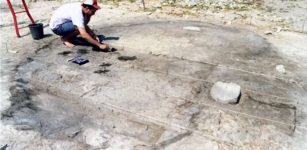 Survivors Of The Latest Ice Age Thrived Near The Sea Of Galilee 23,000 Years Ago
Archaeology | Jan 27, 2022
Survivors Of The Latest Ice Age Thrived Near The Sea Of Galilee 23,000 Years Ago
Archaeology | Jan 27, 2022




